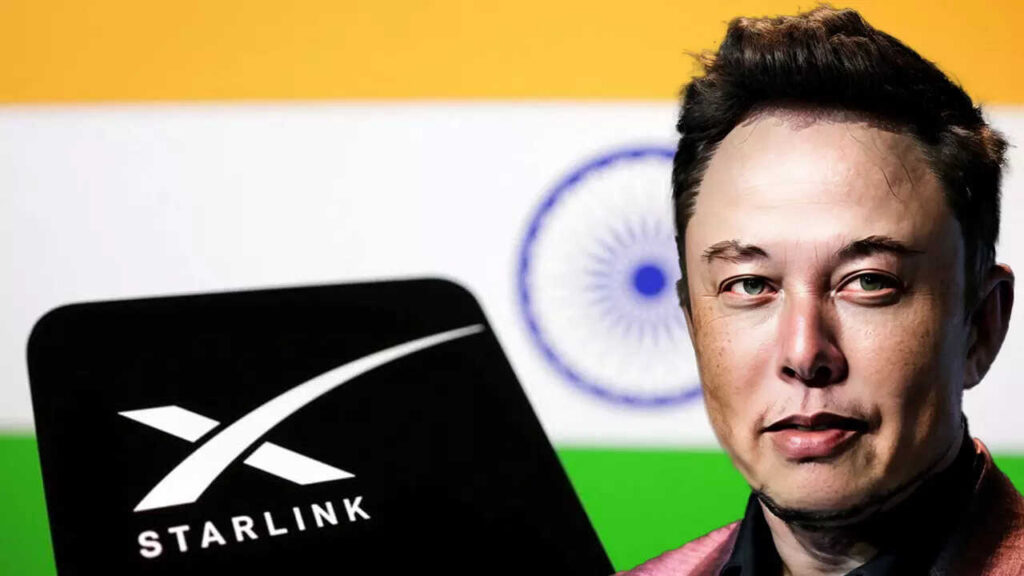Date: June 7, 2025
Category: Indian Current Affairs, Technology, Telecom Sector
🌐 Introduction: A Major Leap in India’s Internet Connectivity
In a landmark decision, India has granted a license to Starlink, the satellite internet venture owned by Elon Musk’s SpaceX, to officially operate within its borders. This approval marks a significant step toward transforming internet accessibility in India, especially in rural and remote regions where broadband penetration remains low.
With this move, India joins a growing list of countries adopting Low Earth Orbit (LEO) satellite technology to bridge the digital divide. Starlink becomes the third satellite-based internet provider to receive permission after Reliance Jio’s JioSpaceFiber and Bharti Airtel-backed OneWeb.
🛰️ What is Starlink?
Starlink is a satellite internet constellation developed by SpaceX. It uses thousands of LEO satellites to provide high-speed, low-latency broadband to underserved areas across the globe. Unlike traditional internet infrastructure that relies on cables and towers, Starlink’s model offers near-global coverage via space-based infrastructure.
As of May 2025, Starlink has deployed over 6,700 satellites, serving millions of users across 70+ countries. With India’s go-ahead, the company is expected to extend its reach to the world’s most populous democracy.
🇮🇳 Why Starlink Matters for India
India has made major strides in digital inclusion in the past decade, yet over 40% of the rural population lacks stable internet access. While fiber optic and mobile networks are expanding, remote areas like Ladakh, Northeast India, and parts of central India still struggle with poor connectivity.
Here’s how Starlink can help:
- Last-Mile Connectivity: Starlink will provide seamless coverage in villages, hills, islands, and deserts where terrestrial infrastructure fails.
- Disaster Resilience: Satellite internet is more resilient during floods, cyclones, and earthquakes.
- Boost to Education & Healthcare: Improved internet will enable online learning, telemedicine, and e-governance in remote districts.
- Digital Economy Push: With better connectivity, rural areas can contribute to India’s digital economy vision and benefit from services like UPI, e-commerce, and telebanking.
📜 Conditions and Regulatory Compliance
Though Starlink has received an “in-principle” license, the Indian government has laid out strict preconditions for full operation:
- Data Localization: All data collected from Indian users must be stored within the country.
- Security Audits: The Department of Telecommunications (DoT) will review Starlink’s systems to ensure compliance with national security protocols.
- Local Infrastructure: Starlink must set up ground stations and network operation centers in India.
- Non-Auctioned Spectrum: The government is expected to allocate spectrum administratively, in line with global practices for satellite services.
Telecom Minister Jyotiraditya Scindia has affirmed that “security and strategic interests of the country will be protected,” and full rollout will be allowed only after all compliance measures are met.
💬 Public Reaction and Market Implications
The news has been met with enthusiasm in the tech and rural development communities. Many experts believe that Starlink’s entry will:
- Intensify competition in the satellite broadband market
- Lower internet prices in underserved areas
- Improve digital literacy in rural India
However, telecom operators have raised concerns over “unfair advantage” if spectrum is allocated without auctions. The Indian Space Association (ISpA) has also called for a level playing field between private and state-run players.
🔮 What’s Next for Starlink in India?
Starlink is now expected to:
- Begin beta testing in select rural districts by September 2025
- Partner with Indian resellers for customer acquisition and support
- Target 1 million users within the first 18 months of launch
A subscription is likely to cost between ₹1,500–₹2,000 per month, making it a premium service initially. However, with local manufacturing of terminals and policy incentives, prices may drop over time.
📌 Conclusion: A New Era in Indian Connectivity
Starlink’s license is more than just a business expansion—it’s a step toward transforming India’s digital inclusivity and infrastructure. If rolled out efficiently and securely, this initiative could place India among the top adopters of next-generation satellite internet, revolutionizing how millions connect, learn, and grow.
Stay tuned to IndianCurrentAffairs.com for real-time updates, match reports, and analysis of all key developments from the tournament.

